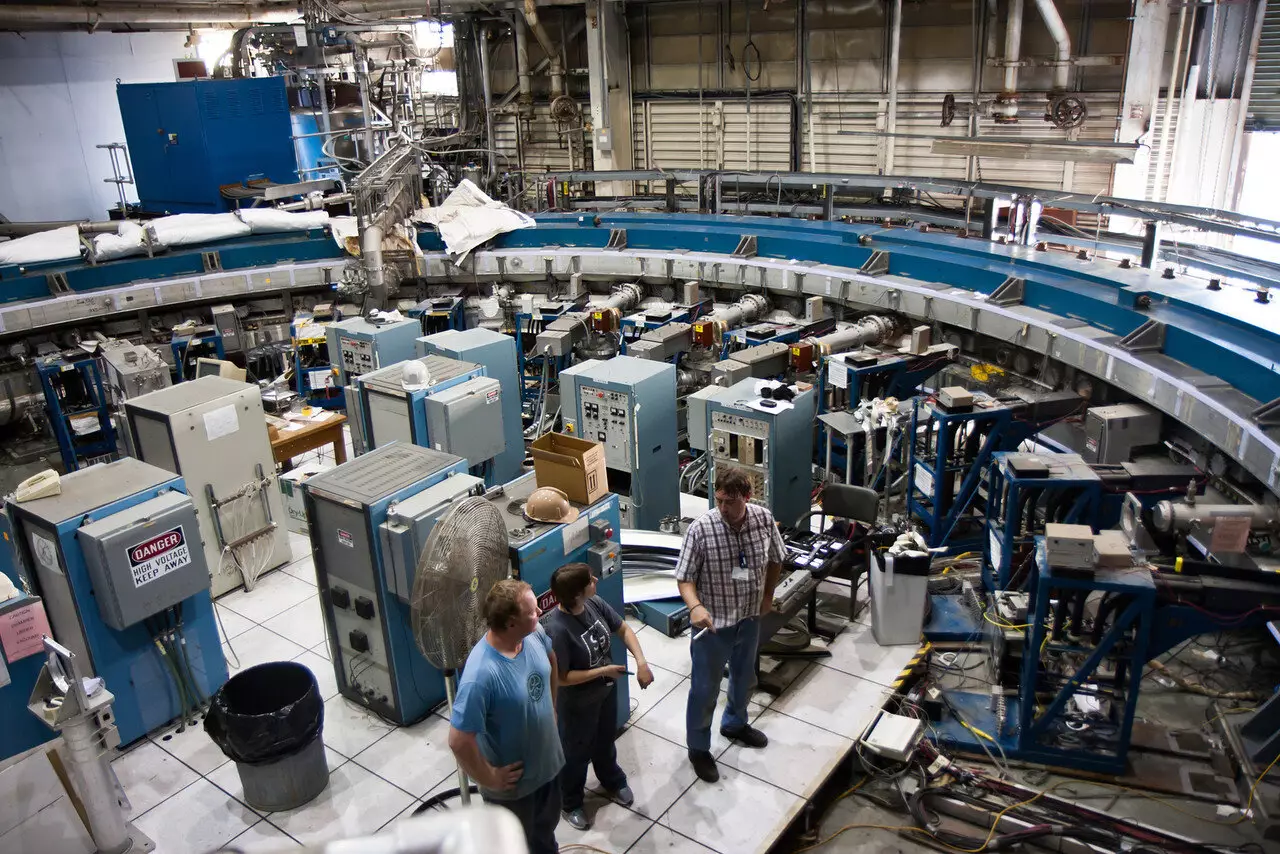Muons, often dubbed “heavy electrons,” are fundamental particles that play an essential role in the field of particle physics. With a mass approximately 207 times that of an electron, muons behave similarly but exhibit distinctly different characteristics due to their considerable mass. The study of muons provides insights into the fundamental laws governing particle interactions and helps scientists probe the boundaries of established physics frameworks. Recent advancements in measuring the magnetic moment of muons have led to significant breakthroughs that promise to illuminate aspects of particle physics that remain enigmatic.
Precision Measurement at Fermilab
The Muon g-2 Collaboration recently achieved a monumental milestone by measuring the muon’s magnetic moment with unprecedented precision, more than doubling previous measurements. Utilizing a specialized storage ring at Fermilab, researchers cycled muons at speeds nearing that of light. Within this ring, a powerful magnetic field, approximately 30,000 times stronger than Earth’s, caused the muons to precess about their spin axis, creating a measurable signal linked closely to their intrinsic magnetic moment. This innovative approach allowed scientists to analyze the interaction between muons and the vacuum, revealing the influence of virtual particles on their behavior.
The central task of this experiment involved accurately determining the muon’s “anomalous magnetic moment,” a critical factor that reflects any deviations from the Standard Model of particle physics. By contrasting the precession frequency of the muons with their cycling frequency, the collaboration reported a precision of 0.2 parts per million, surpassing earlier measurements in both accuracy and reliability.
Historical Context and Experimental Progression
The journey of muon magnetic moment measurements can be traced back to 2006, initially conducted at Brookhaven National Laboratory. Each subsequent experiment garnered improvements in measurement precision, culminating in the latest publication in Physical Review D by the Muon g-2 Collaboration, which comprises 181 scientists from seven countries and 33 institutions. Notably, this measurement represents a 2.2-fold improvement over prior results, underscoring the relentless pursuit of perfection in scientific inquiry.
This effort can be contextualized further by recalling the history of the muon’s discovery in 1936 by physicist Isidor Isaac Rabi, whose exclamation, “Who ordered that?” encapsulated the surprise and intrigue that the muon generated in the particle physics community. The muon, alongside the heavier tau particle discovered later, forms an integral part of the lepton family within the particle physics framework.
Theoretical Predictions and Challenges
Gaining a deep understanding of lepton magnetic moments is a pinnacle scientific endeavor, linking experimental outcomes with theoretical frameworks. The electron’s magnetic moment, known to an astonishing precision of 11 significant digits, serves as a critical benchmark against which muon measurements can be compared. Quantum electrodynamics (QED) predictions play a pivotal role in these analyses, demanding exhaustive calculations involving thousands of Feynman diagrams.
However, predicting the muon’s anomalous magnetic moment presents unique challenges due to its heavier mass. The integration of electroweak contributions alongside the hadron effects makes the computations significantly more complex. The latter encompasses the influence of virtual hadrons—like protons and neutrons—that complicate the vacuum’s particle interactions.
Despite efforts to address theoretical uncertainties, notable limitations anchor the predictions. The QED framework combined with electroweak theory may provide reliable insights, yet accurately accounting for hadronic vacuum fluctuations remains contentious and insufficiently resolved.
The collection of data in this recent experiment spanned several months, from March through July 2019 and November 2019 to March 2020. Each data injection involved grouping muons in bursts, with approximately 100,000 positive muons sent to the storage ring every 1.4 seconds. This intricate cycle allows for a refined analysis of spin polarization, crucial for achieving the experimental precision attained.
However, the researchers faced a myriad of complexities, requiring corrections for potential biases caused by the various dynamics at play within the storage ring. Factors such as beam quality, finite aperture effects, and transient changes in the magnetic field required careful consideration to prevent skewing results. The resolution of these challenges reflects the meticulous nature of experimental particle physics and highlights the need for precision in data interpretation.
Despite the impressive precision of the current findings, researchers acknowledge that comparability with theoretical predictions remains elusive due to discrepancies in necessary theoretical corrections related to hadronic effects. As they look to the future, researchers anticipate that analyzing three additional years of data will yield further improvements in statistical precision, potentially refining the current magnetic moment measurement even more.
As investigations into muon magnetic moments progress, the implications for our understanding of fundamental physics are profound. This ongoing research not only enhances our grasp of particle behavior but also holds the potential to reveal inconsistencies that challenge the Standard Model, paving the way for new theoretical frameworks and a more comprehensive understanding of the universe’s underlying laws.

